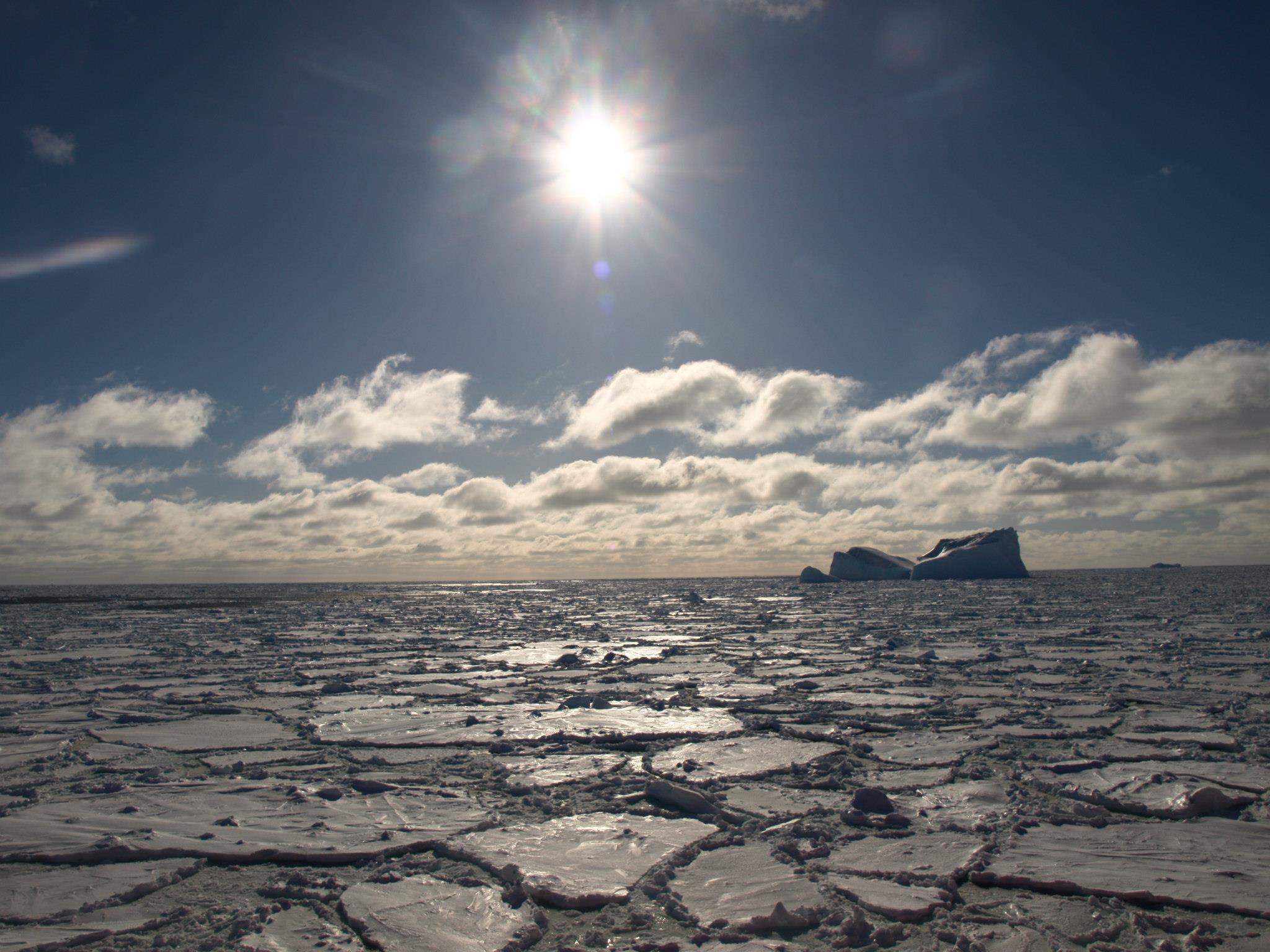- Home
- Science Introduction
- C-SIDE Scientific Goals
C-SIDE scientific goals

The goal of C-SIDE is to assemble a reconstruction of changes in sea-ice extent for the Southern Ocean for the last full glacial cycle, from 130,000 years ago to the present.
The working group will bring together a global community of paleoceanographers with expertise in diatom taxonomy and sea-ice reconstruction, Earth-system modeling, proxies of paleo-productivity, nutrient cycling, and temperature and circulation changes.
This community aims to:
1. Document and synthesize records of sea-ice proxies in the Southern Ocean for the last 130,000 years using diatom assemblage data and complementary proxies of sea-ice changes.
2. Coordinate taxonomic and statistical approaches to establish consistent and comparable representations of sea-ice extent between different regions of the Southern Ocean.
3. Develop regional reconstructions of spatial and temporal changes in sea-ice dynamics as the Earth entered the last glacial period.
4. Compare these reconstructions with contemporaneous regional reconstructions of environmental conditions, with a focus on ocean temperatures, nutrient utilization and productivity, and ocean circulation.
5. Compare these proxy reconstructions with model simulations of sea-ice cover and regional oceanographic dynamics spanning the full glacial-interglacial cycle.
Climate of the Past special issue
The group is preparing the Climate of the Past special issue "Reconstructing Southern Ocean sea-ice dynamics on glacial-to-historical timescales". The special issue editors are Karen Kohfeld, Xavier Crosta, Alice Marzocchi, Juliane Müller, Marit-Solveig Seidenkrantz, Laurie Menviel and Bjørg Risebrobakken.
Submission deadline is 31 December 2022.
During the registration process it is important that the correct special issue is selected.
RECONSTRUCTING SOUTHERN OCEAN SEA-ICE DYNAMICS ON GLACIAL-TO-HISTORICAL TIMESCALES
Sea ice is a critical component of the Earth system in that it regulates heat and gas exchange between the atmosphere and polar oceans; it modulates Southern Ocean upper and lower overturning cells and global ocean circulation; it influences surface ocean stratification, ocean productivity, and nutrient and carbon cycling; and it interacts with ice sheets and ice shelves. As Antarctic sea-ice cover is predicted to decrease in the next decades, it is essential for our Earth system models to be able to simulate the effects of this waning. However, currently both modern and paleo data–model intercomparisons display large differences in sea-ice extent and trends. This affects the ability of these models to project the effects of sea-ice changes on the atmosphere, deep-ocean circulation, and nutrient cycling. Reconstructions of changes in sea-ice concentrations are pivotal to understand how Antarctic sea ice changed in the past and how it influenced these physical and biogeochemical processes. Most previous paleoclimate reconstructions of Southern Ocean sea ice have focused on the Last Glacial Maximum time slice (CLIMAP, MARGO projects) or the Holocene and last interglacial periods (PAGES working group Sea Ice Proxies (SIP)).
This special issue arises from the efforts of an international PAGES working group called Cycles of Sea-Ice Dynamics in the Earth System (C-SIDE), which aims to (a) reconstruct sea-ice conditions in the Southern Ocean over the last 130 000 years, (b) compare these reconstructions with complementary paleo-environmental data documenting changes in the Southern Ocean, and (c) use these data along with model simulations to improve our understanding of Earth system processes. The C-SIDE working group has chosen the last glacial–interglacial cycle (or last 130 000 years) as a focus because this timescale allows us to evaluate the role of sea ice on major climate transitions including glacial inception, when carbon was sequestered in the ocean, and deglaciation, when ocean carbon reserves were released to the atmosphere. The time frame also encompasses the penultimate interglacial when Antarctica was c. 2 °C warmer than today – a useful “process” analogue for future warming scenarios. At this time, the working group has held two workshops (October 2018 in Vancouver, Canada, and August/September 2019 in Sydney, Australia) to achieve these goals.
This special issue invites papers on the topics of (a) new sea-ice reconstructions in the Southern Ocean using new and established proxies of changes in sea ice; (b) regional compilations of changes in sea-ice distributions during the last glacial–interglacial cycle; (c) studies comparing (new and published) sea-ice records with complementary records of changes in circulation, temperature, and nutrient or carbon cycling; and (d) model analysis and model–data comparison papers that provide insights into the key processes linking Southern Ocean sea-ice changes with ice sheet, atmosphere, and ocean dynamics, as well as biogeochemical cycling in the ocean. We strongly encourage submissions that focus on at least one full glacial–interglacial cycle but encourage submissions from other time spans as well.
Access the special issue: https://cp.copernicus.org/articles/special_issue1127.html